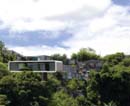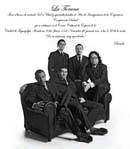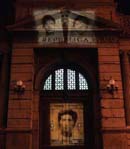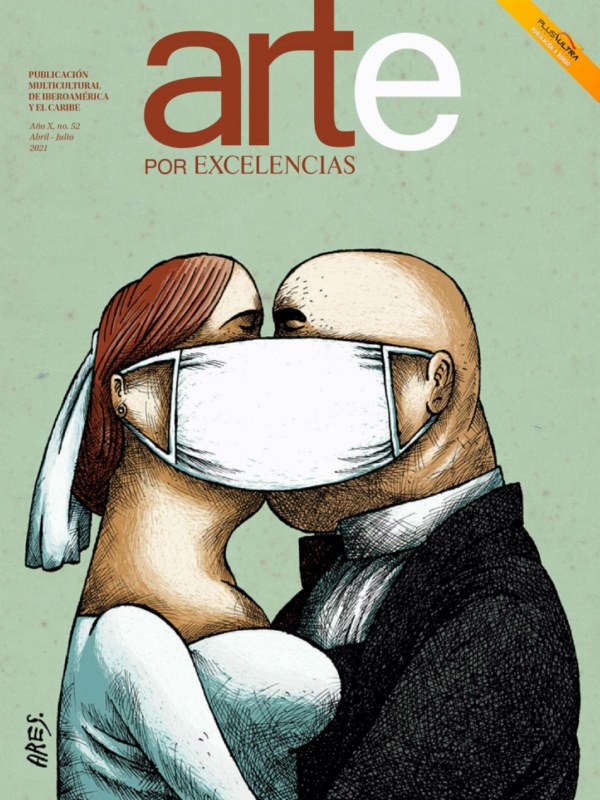Over the last few years, the image we all had of Central America in terms of artistic creation has been changing. I’m referring to the six nations from the region –I’m ruling out Belize regardless of the work carried out by Spanish artist, curator and promoter Joan Duran and rather focusing on the Spanish-speaking countries there. And that change of mind is owed to several factors whose origins can be traced in the effort conducted by certain institutions and personalities linked to the visual arts and whose research endeavors, recognition and spread across the area have put the finest local art on the map, especially the one made by a new breed of creators who has doubt taken the lead in this respect. I must bring awareness –with absolute historic justice– of the fact that the Havana Biennial, from its very first edition nearly a quarter of a century ago, has opened up its arms to renowned artists from Nicaragua, Guatemala, Honduras, El Salvador, Costa Rica and Panama throughout its different: Armando Morales, Arnoldo Guillen, Rodolfo Abularach, Efrain Recinos, Otton Solis, Guillermo Trujillo, Tabo Toral, Luis Aguilar Ponce, Roberto Huezo, Francisco Alvarado, Jesus Romeo, Orlando Sobalvarro, Luis Gonzalez Palma, Raul Quintanilla, Moises Barrios, Isabel Ruiz, Otto Apuy, Anibal Lopez, just to name but a few. More recently: Manuel Zumbado, Dario Escobar, Priscilla Monge, Patricia Belli, Humberto Velez, Alejandro Paz, Caja Ludica, Roberto Lizano, Asociación Incorpore, among others. Costa Rican curator and critic Virginia Perez-Raton, first from the San Jose Museum of Contemporary Art and Design, and later on from her own Teor/éTica, a space for debates, reflections, and curatorial and publishing projects that has spanned from the 1990s to the early 21st century, has been one of the main promoters of the artistic creations out of both her country and the entire region. In the same breath, Guatemalan curator, essayist and critic Rosina Cazali has equally done an outstanding effort to highlight the very best of her nation’s arts, a continuation of what her fellow countryman Luis Gonzalez Palma did with the Colloquia project, a short-lived space for debate and cultural encounters in Guatemala, let alone the work of the Sol del Rio Gallery, led in the like-name city by Paraguay’s restless artist Victor Martinez. The same remarks of appraisal could go to Bayardo Blandino and America Mejia who, from the Women in Arts Cultural Center (MUA) in Tegucigalpa, are carrying out major activities for the spread and recognition of Honduran artists and a number of specific regional integration projects, and to Monica Kupfer, the energized founder and supporter of the Panama Biennial. On the other hand, Nicaraguan independent gallery owner Juanita Bermudez, from a less favorable framework, is fighting for the promotion of her country’s esthetic expressions, while Patricia Belli stays at the helm of the international teaching experience called La Espora where she forms young artists from across the region and helps them launch their own personal and collective projects. In El Salvador, even though there’s a lack of boldface names like the ones mentioned above, there are institutions devoted to the spread and creation of communication spaces among artists in the country, featuring a spontaneous movement among youngsters for establishing permanent contacts with both the region and the rest of the world. This recount should not conclude without mentioning the longstanding job done by Venezuelan historian and critic Belgica Rodriguez, whose systematic contacts with Central American institutions and creators have dramatically contributed to giving them some hype in several parts of the world through her lectures, essays and books. Overall, the new generations of artists and the combined effort of these personalities have finally helped put Central America on the world map of the contemporary arts. Today, we can see many of the region’s top artists exhibiting in different biennials and international events: Regina Jose Galindo, Walter Iraheta, Marcos Agudelo, Wilbert Carmona, Andres Asturias, Adan Vallecillo, Federico Herrero, Regina Aguilar, Karla Solano, Esteban Piedra, Veronica Riedel, Rogelio Salmeron, Ronald Moran, Colectivo La Torana, supported by a complex assortment of artworks and projects meant to express realities that are poorly known outside their own contexts, as well as parts of their being and existence in Central America that have up to now been ignored by literature, music and filmmaking. Another factor that has helped this array of expressions and artists –labeled by critics as part of the Central American vanguard– garner far more recognition and media hype, is the yearly art biennial each of these nations have been holding nationwide since 1978 –the year when the oldest of these events kicked off: the Guatemala Biennial. Right now, the event is calling for changes in both organization and structure in a bid to turn it into a genuine space of confrontation and dialogue among artists, spectators and experts within a theoretical and practical framework conceived for better comprehension of the local and regional arts. These national biennials –six in all– come to a close with the Central American Biennial organized in a different country each time. During the latest edition held in Honduras, a group of guests –including me– signed up for a Forum of Ideas that homed in on the ethics of artists and curators. This Biennial –sponsored by the Ortiz-Gurdian Foundation and the Pro America Bank– was planned by the Women in Arts Cultural Center (MUA) under the leadership of America Mejia and restless curator and promoter Bayardo Blandino. Set up at the Museum of National Identity in Tegucigalpa, the Central American Biennial gathered the works of those artists who grabbed top honors in their national biennials and doled out prizes of its own by the hand of a jury made up of Mexico’s Julian Zugazagoitia, director of the Barrio Museum in New York City; Colombia’s Felix Angel, director of the BID Cultural Center in Washington, and by Ecuador’s independent curator Rodolfo Kronfle. The First Prize went to Marcos Agudelo (Nicaragua) for his piece entitled “To Andres Castro’s Lost Grave, to Nicaragua’s Unsung Heroes”, 2008, a micro installation and video that was voted “a humble yet powerful piece that reverts the conventionalities of public statues and becomes an efficient agent for the rethinking of history; an anti-monument that allows spectators to poetically mull over the political action of the present, moving effortlessly far beyond the specificity of the context to evolve into a valid commentary of universal scope.” The Second Prize went to Esteban Piedra (Costa Rica) for his “Study for the Deconstruction of Some Houses”, 2008, wood, Plexiglas, iron, insects and video projection, for its “sophisticated inquiry of intimate poetics, a brilliant exception within the dominating discourse lines of the arts in the region, herein exemplified by this exhibition.” The Third Prize was for Veronica Riedel (Guatemala) for her piece entitled “Armored Motor-Taxi (Tuk Tuk)”, 2008, a life-size commuting vehicle that conveyed “an effective and ludicrous hybridism of a repertoire of esthetics aimed at making social criticism and pointing at the different phenomena that belong to it.” The only one honorary mention went to Errol Barrantes (Costa Rica) for his digital photography works “In the Shores of the Virilla” from the 2008 Dream Are for Free series. Approximately some 40 artists exhibited their artworks and projects in different museum halls, all of them reflecting a variety of trends, themes and formats that one way or another showcases the plurality of Central American art. Still hampered by restrictions as far as space for guest artists is concerned –just 2,5 meters of wall– and other drawbacks inherited from old conceptions in terms of organization, the event managed to somewhat portray the possible roads ahead where the most significant and representative art of the region is headed to. Paintings, drawings and engravings were scarce, perhaps due to the longstanding tradition and presence of those expressions in all of these countries in which galleries and museums have always kept them to themselves. Now the younger generation wants to break free from them by turning mostly to objects, installations, photography and video in their desire for taking issue with art and the complexity of human nature in the midst of unprecedented social and political conflicts. Today’s young artists are far more committed to their society and to their countries in an effort to reach higher grounds since they believe their aspirations as individuals have not been met. That explains their critical attitude toward any sign of power in terms of politics, economics, ethnicity, sexuality, as well as toward environmental deterioration, violence and oblivion. The interesting things about all this is their addressing this situation through such current trends as conceptualism, minimalism, pop art, expressionism, standing aloof from narrations, journalistic reports or plain descriptions that might eventually get mixed up with the so-called propaganda or pamphlets at any level. Irony, humor, cynicism and mocking were also commonplace as legit tools to broach delicate situations in some of the countries, a reason why many of the artworks were consciously blasting the tokens of reflexive maturity that have permeated both local and regional arts. It’s worth pointing out that none of the biennials –no matter how hard the organizers might try– stands for a faithful expression of everything going on in so many areas. Yet the sixth edition of the Central American Biennial did show that artists have switched to new ways of operating among themselves, chiefly among the new breeds of artists and the planners of this kind of event. But it’s not only about Honduras in terms of this regional collective exhibit. The new winds of change are also blowing through some institutions and into a number of collective efforts. Not too long ago I had the opportunity of attending a meeting held in the city of Leon, Nicaragua, with the support of impresario and art collector Ramiro Ortiz, where the sponsors and organizers of each of the six national biennials huddled to share views as to the future of these events and talk about the Havana Biennial experience since its opening edition back in 1984. We discussed about the underpinnings of an event as complicated as a biennial, subjected to countless questionings as far as its conception and existence are concerned. The creation of a Regional Documentation Center was proposed for the compilation and registration of the area’s artistic creation that, at the same time, could hook up the different projects out of each and every country –including their own national biennials– without having to rely on middlemen. By doing this, the foundations for the organization and institutionalization of the regional artistic memory –so useful and necessary for researchers, scholars and experts from the turf and anywhere else around the world- are finally cast. The judgments put on the table there should redound to the benefit of each biennial. It’s all about the transformation of working methods, their bases, since all participation in these events is stripped of curatorial and conceptual grounds, its competitiveness limited to a prize system, nagging limitation in the extension of the works and other aspects that blur in-depth understanding of the complexity of the ongoing artistic creation. It seems more awareness about the role the biennials play in the development of Central America’s artistic scene is now building on. These events are generally supported and bankrolled by private institutions that fight against all odds to steer past ignorance and misunderstandings of all kind, just as much as the Paiz Foundation in Guatemala and Nicaragua’s Ortiz-Gurdian Foundation do in their own nations. They play a hands-on role, as large institutions, in the accomplishment of short-term and long-term social goals. Other countries, though, have their hopes pinned on public museums, institutes or ministries in charge today of taking crucial steps for the sake of contemporary artistic expressions in the region. There’s been a wakeup call to the global world on the one hand, and to the most genuine local artistic expressions on the other hand that goes far beyond the region’s beaten track of particular art histories, following decades of darkness and grayness in their own projection. It’s not pointless to remember the things that are always said when we mention Central America: hat we don’t travel to it, but rather fly over it as we go from Mexico to South America. We can now say we do travel directly to the region thanks to efforts currently underway, as well as to artworks and projects that pop up every passing day. Therefore, there’s a real purpose in bringing the region to the universal foreground of the arts by relying on institutional and alternative projects and works whose discourse has taken different paths, both inside out and outside in. Even though proposals aimed at the use of languages clung to traditionally popular postulates and the western history of the art prevailed for years, today’s changes are headed for the basics of the individuals, their immediate circumstances, the specific human nature, despite the sighting of local identity signs that fortunately heighten the discourse’s complexity through the addition of new languages, interdisciplinary crossings and cutting-edge technology. It’s a smart commitment of the local and the global affecting each other because they have finally broken free from the old ties that once turned both entities into poles apart. That willingness is not only felt in Guatemala –following the 16th edition of its national biennial in July 2008 with all changes adapted to the newest trends– but also in the entire region. There are encouraging signs in the way certain institutions provide those events with experts and funds, standing their global ground but never ignoring the undeniable support and legacy they have in local communities, tongues and cultures, regardless of the hardships they have been through over the past 30 years as a result of inner wars, violence, corruption, repression of different stripes, systematic isolation. It pleases to witness the tremendous respect those local conclaves have toward the Havana Biennial, currently penciled in as a valuable icon based on the improved layout, organization and approach of large-scale exhibitions, their presentations and their relationships with the urban environment. Nothing seems to stand in the way of the region’s finest creators and experts. Fortunately, in Cuba we have learned about those dearly endeavors and changes thanks to exhibitions staged some years ago at the Casa de las Americas and the “Wifredo Lam” Center for the Contemporary Arts, two institutions that have always appraised the region’s symbolic creation on a regular basis. We may anticipate that Central America has entered a new era and reached a point of no return. The region is benefiting from an equal-footing engagement in the art movement of our Americas –a fertile contemporary artistic experience hailing from the south.





Publicaciones relacionadas

Un tejido expositivo con genuinos imaginarios
Diciembre 19, 2024
Geo Ripley: De la sombra a la luz
Diciembre 11, 2024













